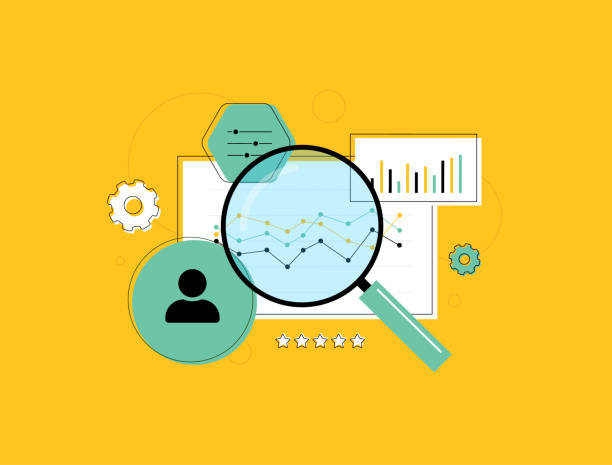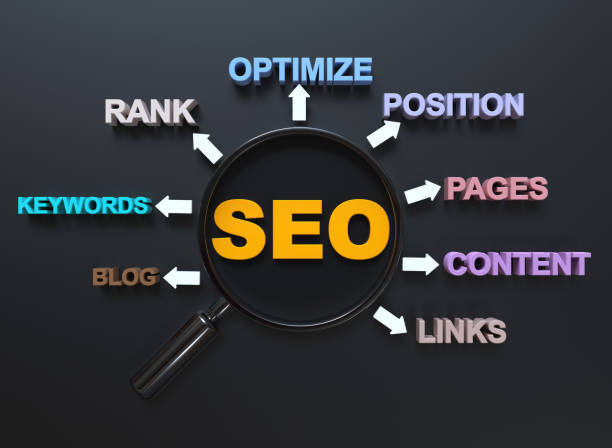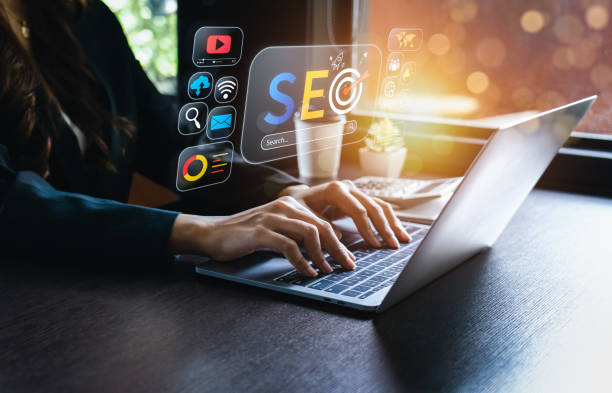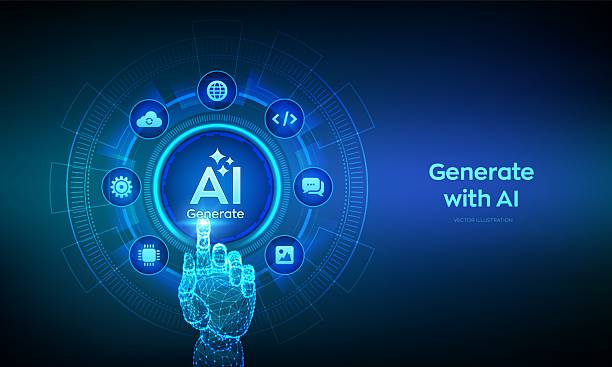Introduction to On-Page SEO and Its Importance

In today’s competitive web world, being visible in search engines is more vital than ever.
This is where the concept of #SEO, or Search Engine Optimization, comes into play.
However, SEO itself is divided into two main parts: Off-Page SEO and On-Page SEO.
In this educational section, we will delve deep into On-Page SEO, which includes all the actions you directly perform on your website to improve its ranking in search results.
The importance of on-page site optimization cannot be overlooked, as it forms the foundation of any successful SEO strategy.
Without a strong on-page SEO foundation, even the best off-page SEO campaigns may not achieve the desired results.
These actions include content optimization, site structure, HTML codes, and user experience.
A website with strong on-page SEO helps search engines better understand your content and display it to relevant users.
In other words, On-Page SEO is a puzzle whose pieces fit together to present a complete picture of your website to Google and other search engines.
A correct understanding of these principles and their application can make a significant difference in your organic traffic and ultimately your online success.
This guide will introduce you step-by-step to the fundamental principles and techniques of SEO.
Are you worried that your company’s old website is driving away new customers? Rasaweb solves this problem with modern and efficient corporate website design.
✅ Increases your brand’s credibility.
✅ Helps attract targeted customers.
⚡ Contact Rasaweb for a free consultation!
Keyword Research and Its Role in On-Page SEO

Keyword research is the backbone of any successful On-Page SEO strategy and, as an important explanatory section, must be carefully reviewed.
Before you even write a single line of content, you need to know what your users are looking for.
Keywords are the phrases users enter into search engines to find the information, products, or services they need.
Choosing the right keywords not only helps you create content relevant to your audience’s needs but also signals to search engines what your page is about.
For keyword research, you can use tools like Google Keyword Planner, SEMrush, Ahrefs, or even Google’s own search engine.
The main goal is to find words that have both a good search volume and reasonable competitiveness.
Remember that focusing only on high-volume keywords is not enough; Long-Tail Keywords, which are usually longer and more specific, can drive more targeted traffic to your site and generally have less competition.
After identifying primary and secondary keywords, you should naturally and intelligently incorporate them into your content.
This includes titles, headings, body text, meta descriptions, and even image file names.
Avoid keyword stuffing, as this practice is not only penalized by search engines but also degrades the user experience.
Effective On-Page SEO focuses on the natural and logical distribution of keywords throughout the page.
Optimizing Titles and Meta Descriptions
![]()
The page title (Title Tag) and meta description (Meta Description) are the first things users see in search results and play a vital role in your Click-Through Rate (CTR).
This section serves as a comprehensive guide for optimizing these key On-Page SEO elements.
The page title should be short, engaging, and contain your primary keyword.
This title tells search engines and users what your page is about.
The recommended length for a title is usually between 50 and 60 characters to be fully displayed in search results.
Avoid duplicate titles for different pages, as this can confuse search engines.
The meta description is also a brief summary of your page’s content.
Although it doesn’t directly affect ranking, an attractive meta description can entice users to click on your link.
The standard length for a meta description is between 150 and 160 characters.
In it, you should naturally incorporate your keywords and include a Call-to-Action.
These two elements act as your site’s storefront in search results, and optimizing them is of great importance.
| Element | Key Recommendation | Ideal Length | Goal in On-Page SEO |
|---|---|---|---|
| Page Title (Title Tag) | Includes primary keyword, unique, engaging | 50-60 characters | Helps search engine understand page topic |
| Meta Description | Engaging content summary, includes keywords, call to action | 150-160 characters | Increases Click-Through Rate (CTR) from search results |
URL Structure and Content Optimization

URL (Uniform Resource Locator) structure and content quality are two very important factors in On-Page SEO, both of which must be carefully examined with a specialized perspective.
An SEO-friendly URL should be short, readable, and contain keywords.
This not only helps search engines better understand your site’s structure but also improves the user experience.
Avoid long URLs full of incomprehensible characters.
For example, instead of “yoursite.com/?p=12345”, use “yoursite.com/blog/seo-on-page-guide”.
Using hyphens (-) to separate words instead of underscores (_) is also recommended.
Alongside URLs, content optimization is also of great importance.
Your content should not only be useful and valuable to users but also understandable to search engines.
This includes the correct use of headings (H1, H2, H3, etc.) to structure content.
Each page should have only one H1 tag, which contains the primary keyword.
H2 and H3 tags are used for subheadings and can include related keywords.
Furthermore, the content should be deep and comprehensive, addressing all aspects of the topic.
Google highly values quality content that meets user needs.
Ensure your content is regularly updated and includes new information.
On-Page optimization with strong content and correct URL structure paves the way for better rankings.
Are your online sales not as expected? With Rasaweb, permanently solve the problem of low sales and poor user experience!
✅ Increase visitor-to-customer conversion rates
✅ Create an enjoyable user experience and boost customer trust
⚡ Act now to receive a free consultation!
The Importance of Page Load Speed and User Experience

Website load speed and User Experience (UX) are two vital factors in modern On-Page SEO and require a precise analytical approach.
Google increasingly focuses on these factors, especially with the introduction of Core Web Vitals, which consider specific metrics for measuring user experience.
A slow website not only frustrates users and causes them to leave your page (increasing Bounce Rate) but also sends negative signals to search engines.
To improve load speed, you can take various actions:
- Image Optimization: Compressing images without significant quality loss and using modern formats like WebP.
- Browser Caching: Enabling caching to store files in users’ browsers and reduce load time on subsequent visits.
- Reducing HTTP Requests: Consolidating CSS and JavaScript files and removing unnecessary ones.
- GZIP Compression: Compressing server files before sending them to the user’s browser.
- Using a CDN: Content Delivery Networks can deliver your content from the server closest to the user.
User experience goes beyond speed; easy navigation, responsive design (Responsive Design) for mobile and tablet, text readability, and appealing visual layout all contribute to better UX.
A positive user experience not only increases the time users spend on your site but also indirectly impacts your On-Page SEO and rankings.
Google prefers websites that provide a good experience to users.
Using Internal and External Links

Link building, whether internal or external, is an integral part of On-Page SEO strategy, and in this section, we will explain its importance.
Internal Links: These links connect pages within your own website.
Intelligent use of internal links has several benefits:
- Increased Page Ranking: Internal links help distribute “authority” (PageRank) throughout your site.
Pages that receive links from more authoritative pages may achieve better rankings. - Improved Navigation: Helps users easily move around your site and find relevant information.
- Assists Search Engine Crawling: Allows Google bots to better understand your site’s structure and discover new or updated pages.
- Reduced Bounce Rate: By providing relevant content through internal links, you encourage users to stay longer on your site.
External/Outbound Links: These links refer to other websites.
While it might seem detrimental for users to leave your site, linking to authoritative and relevant sources has advantages:
- Increased Credibility: Shows that you support your content with credible sources, which can increase your site’s credibility with search engines and users.
- Increased Value for the User: By providing additional resources, you offer more value to your users.
For On-Page SEO, it’s important to use descriptive and relevant Anchor Texts.
Anchor text is the text on which a link is placed and should point to the content of the destination page.
Optimizing Images and Multimedia Files

Images and multimedia files not only add visual appeal to your website but can also play a significant role in On-Page SEO.
This section serves as a practical guide for optimizing these elements.
Alt Text (Alternative Text): The most important action in image optimization is adding appropriate alternative text.
Alt Text is displayed if an image fails to load or for visually impaired users (via a Screen Reader).
Search engines also use this text to understand the image’s content.
Alt Text should be descriptive and contain relevant keywords, but avoid keyword stuffing.
Image File Names: Before uploading an image, optimize its file name.
Instead of “IMG_12345.jpg”, use names like “seo-on-page-guide.jpg” that are relevant to the image content and the page.
Image Compression: Large image sizes can severely reduce your site’s load speed.
Use image compression tools like TinyPNG or Smush to reduce file sizes without significant quality loss.
Modern formats like WebP can also dramatically reduce size.
Appropriate Dimensions: Prepare images with suitable dimensions for web display.
Loading an image with dimensions of 4000×3000 pixels and displaying it at 400×300 pixels is a waste of bandwidth and time.
For videos and other multimedia files, ensure their players are lightweight and optimized.
Using platforms like YouTube to host videos and then embed them on your site, is usually the best approach, as these platforms perform the necessary optimizations themselves.
These actions are part of your comprehensive On-Page SEO strategy.
| Item | Description | Importance for SEO |
|---|---|---|
| Alternative Text (Alt Text) | Explains image content for search engines and users | Very High (Helps with ranking in image search) |
| File Name | Using relevant and descriptive keywords in the file name | High (Helps the search engine understand image content) |
| Compression | Reducing image file size without significant quality loss | Very High (Direct impact on load speed) |
| Dimensions | Using appropriate dimensions for web display | Medium (Impact on load speed) |
Engaging and Thought-Provoking Content for Users

At the heart of every successful On-Page SEO strategy lies high-quality and engaging content.
However, merely informative content is not enough; to attract and retain users, you need thought-provoking and interactive content that engages the audience’s mind.
This type of content makes users think, encourages them to interact, and makes them spend more time on your site.
How to create thought-provoking content?
- Frequently Asked Questions (FAQ): Q&A sections that answer common user questions about your topic can be very effective.
This not only helps solve user problems but also gives you the opportunity to naturally incorporate various keywords into your content. - Case Studies and Challenges: Presenting real-world scenarios and challenges users might face, and then offering solutions, can make content very engaging.
- Surveys and Quizzes: Creating short surveys or quizzes related to the topic can engage users and also provide valuable insights for you.
- Controversial Content or Different Perspectives: Sometimes, offering a different or even controversial viewpoint on a topic can encourage users to comment and discuss.
Of course, you must ensure these discussions remain constructive.
The ultimate goal of this type of content is to increase user engagement.
When users interact with your content, positive signals are sent to search engines, indicating that your content is valuable and relevant.
This directly helps improve your On-Page SEO, as search engines aim to provide the best and most relevant results to their users.
Did you know your company’s website is the first point of contact for 75% of potential customers?
Your website is the face of your brand. With **Rasaweb**’s corporate website design services, build an online presence that earns customer trust.
✅ Create a professional and lasting image for your brand
✅ Attract target customers and increase online credibility
⚡ Get a free consultation from **Rasaweb** experts now!
Google Algorithm Updates and Their Impact on On-Page SEO
![]()
Search engines, especially Google, constantly update their algorithms to provide the best and most relevant results to their users.
Understanding these news and changes is vital for maintaining and improving On-Page SEO.
These updates can have significant impacts on website rankings, and ignoring them can lead to a drop in traffic.
Among the most important updates that have affected On-Page SEO are the following:
- Penguin Algorithm: Although it primarily focused on spammy links, it highlighted the importance of overall content quality and avoiding black-hat SEO techniques.
- Hummingbird Algorithm: This algorithm focused on understanding “concepts” rather than “keywords.”
This means your content should answer more complex user queries, not just repeat keywords. - Mobilegeddon Algorithm: With the increase in mobile usage, this update led to mobile-friendly sites gaining an advantage in mobile search results.
This doubled the importance of responsive design and mobile user experience in On-Page SEO. - Core Web Vitals: The latest set of metrics that focus on page load speed, interactivity, and visual stability, directly impacting user experience and rankings.
- E-A-T (Expertise, Authoritativeness, Trustworthiness): Google increasingly values content that demonstrates credibility, expertise, and trustworthiness.
This means producing accurate and correct content by expert authors.
Following Google’s guidelines and focusing on providing real value to the user, is the best way to withstand these updates and maintain your position in search results.
On-Page SEO must always align with the latest changes.
Conclusion and the Future of On-Page SEO

Given all the points discussed so far, it is clear that On-Page SEO is a complex but absolutely essential process for the success of any website.
This article aimed to introduce you to the most important aspects of on-page site optimization with an engaging yet comprehensive approach.
From keyword research to technical optimization and creating attractive content, each of these elements plays a key role in improving your site’s visibility in search engines.
The future of On-Page SEO revolves increasingly around user-centricity, artificial intelligence, and user experience.
Search engines have become smarter and can better understand users’ true intent.
Therefore, producing content that genuinely answers user needs, rather than just keyword stuffing, will be of higher importance.
The use of structured data (Schema Markup) to help search engines better understand content, optimization for Voice Search, and focusing on Mobile-First Indexing are also future trends that should be considered.
On-Page SEO is an ongoing effort, not a one-time project.
As algorithms change and user behavior evolves, you must constantly update your strategies.
By adhering to the principles explained and continuously monitoring your site’s performance, you can ensure that your website shines in search results not only today but also in the future.
Investing in On-Page SEO is an investment in the sustainable growth and long-term success of your online business.
Frequently Asked Questions
| Question | Answer |
|---|---|
| What is On-Page SEO? | On-Page SEO refers to the set of actions performed within a website and on its page content to achieve a better ranking in search results. |
| Why is On-Page SEO important for a website? | On-Page SEO helps search engines better understand your page’s content and assess its relevance. It also provides a better user experience for visitors. |
| What are the most important On-Page SEO factors? | The most important factors include keyword optimization, content quality, Title Tag, Meta Description, URL structure, heading tags (H1-H6), internal linking, and image optimization. |
| What role does the Title Tag play in On-Page SEO? | The Title Tag is one of the most important On-Page SEO factors that displays your page title in search results and browser tabs. It should include the main keyword and be engaging. |
| What is the importance of Meta Description in On-Page SEO? | The Meta Description provides a summary of the page’s content, and although it doesn’t directly affect ranking, it can increase the Click-Through Rate (CTR) by encouraging users to click. |
| How are keywords used in On-Page SEO? | Keywords are phrases that users employ to search for information in search engines. Proper and natural use of them in content helps the search engine identify the page’s topic. |
| What is internal linking and what are its benefits in On-Page SEO? | Internal linking means creating links between different pages of a website. This helps distribute page authority, assists search engine robots in crawling, and improves user experience. |
| How does image optimization affect On-Page SEO? | Image optimization includes compressing size, using appropriate Alt tags, and proper file naming. This improves page load speed and helps search engines understand image content. |
| What does high-quality content mean in On-Page SEO? | High-quality content means content that is comprehensive, accurate, unique, up-to-date, user-friendly, and meets users’ needs. |
| What role does URL structure play in On-Page SEO? | Readable, short URLs that include the main keyword help search engines and users better understand page content and improve the user experience. |
And other advertising services from Rasaweb Advertising Agency
Smart Custom Software: Professional optimization to increase website traffic using Google Ads management.
Smart Marketing Automation: An effective tool for digital branding with the help of real data utilization.
Smart Brand Identity: Revolutionize customer acquisition with user experience customization.
Smart Digital Branding: Designed for businesses seeking campaign management through key page optimization.
Smart Brand Identity: An effective tool for analyzing customer behavior with smart data analytics.
And over hundreds of other services in internet advertising, advertising consultation, and organizational solutions.
Internet Advertising | Advertising Strategy | Advertorial
Sources
Complete Guide to Website On-Page SEO
Step-by-Step On-Page Optimization Training
What is the Role of Keywords in On-Page SEO?
The Importance of Internal Linking in Boosting SEO Ranking
? On the path of your business growth and transformation, Rasaweb Afarin Digital Marketing Agency, with years of experience and specialized knowledge, is by your side. With us, you not only experience optimization and a powerful online presence, but also with our professional services in fast website design, we create your digital identity in the shortest time and with the highest quality. Let us build your online success!
📍 Tehran, Mirdamad Street, next to Bank Markazi, Southern Kazerun Alley, Ramin Alley, No. 6



